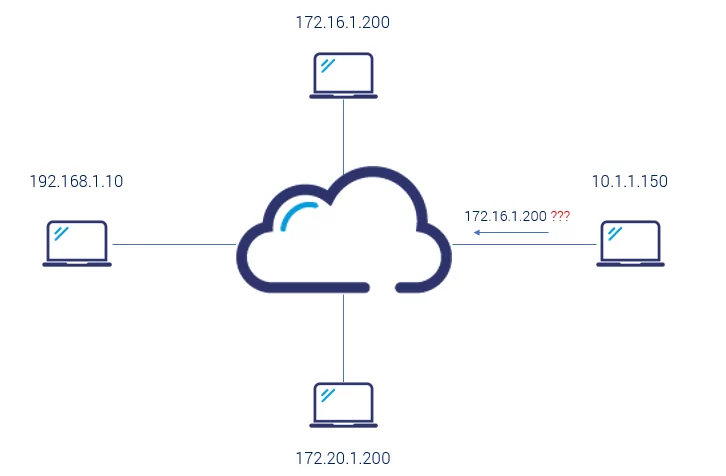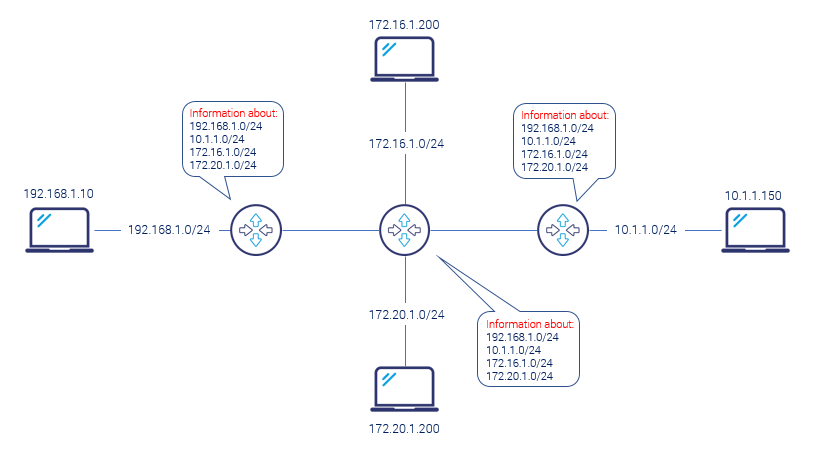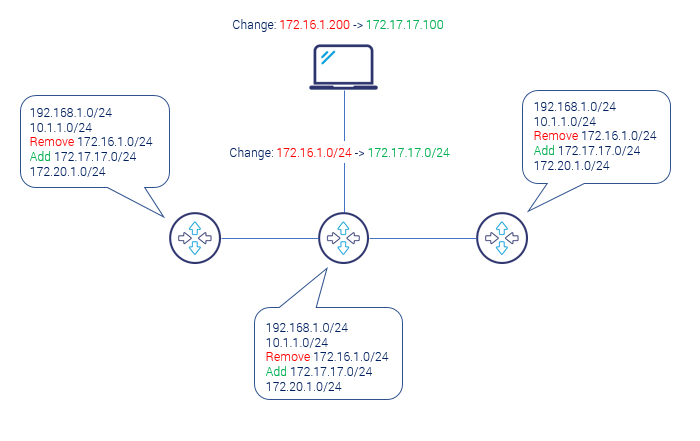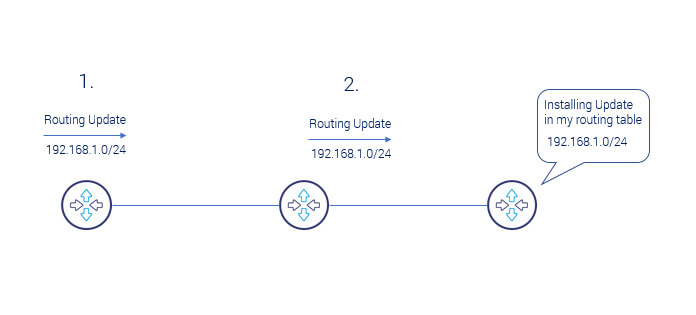Routing is the crucial process in IP networks responsible for IP prefix propagation and keeping the whole network topology in order. Having billions of IP addresses divided into many different subnets, without routing there would be a muddle that will prevent the whole Internet from working. So, routing is like the set of rules that allows localizing a particular IP network and IP addresses that belong to that network. This set of rules needs to be consistent across the whole IP cloud.
Look at the below picture and imagine that computers want to communicate with each other. If the laptops have IP addresses from different subnets they have no clue how to get the different addresses. They will use their default gateways but what’s next?
Here comes the routing
The missing mechanism that informs the network on how to get to the different IP Networks (known as IP prefixes) is routing. Routing is satisfied by network devices known as routers. Routers route the IP packets traversing the network in the right direction based on routing information. So, routing information is about where to send the packet to get to the destination. In the below scheme, all routers which form a network need to have consistent routing information so that every laptop is then able to communicate with each other.
Learn about static, routing, dynamic routing, and more in our technical training Network Fundamentals – Design & Build Enterprise Networks
Static routing
How do routers know the IP destinations? One way to achieve full information is to tell the router manually about a specific destination. This process of telling about specific destinations by the human is called static routing information. Setting the single static route is a very quick administrative task.
But take a note that when deciding to go with a static routing solution, the network admin is responsible for informing every router about:
- every change in topology,
- every new prefix,
- every prefix removal
So in our picture if there is only one change of IP subnet address from 172.16.1.0/24 to 172.17.17.0/24, the administrator needs to make six operations: remove the old prefix, configure the new prefix, and repeat it three times.
Dynamic routing
Now, imagine that your network consists of 100 routers and you have to add only 2 new different subnets to the network because there is an opening of a new office in your company. You would need to add 200 static routing entries. Imagine another example that there is Internet routing change with thousands of routers managed by different Internet Service Providers and routing tables have over 600 000 prefixes.
What is wrong with static routing here?
- the agreements between administration domains will take ages,
- the static modifications will be a nightmare,
- the probability of mistake will rise incredible,
- the change process will be very long
- the static routing may not react to network failures thus the failure could break whole communication
There is one more point related to the problem of the static route, which is the possibility of routing loops creation by mistake. Yes, that is why we need to use dynamic routing.
Dynamic routing solves the above problems. With dynamic routing, there is an automatic process running between all routers. The process is called routing protocol and is designed to
- exchange IP prefixes between routers,
- find the optimal (shortest) path to destination,
- form anti-loop topology
- automate changes
- speed up the process of administrative tasks
- react to topology changes and failures and recalculate optimal path
Examples of dynamic routing protocols are BGP, EIGRP, OSPF and RIP that you can choose according to your topology, specific requirements ( like scenario: WAN, Internet Edge, Data Center, SP networks), technical capabilities (vendor, type of devices, supported protocols) and so on.
So, where to use static and where to use dynamic routing?
The above consideration points out the pros and cons of the dynamic and static routing approach. Anyway, what you should choose, should be answered based on your scenario. Let’s read the examples:
- Example 1: If you have one router connected to the Internet at home, use static route 0.0.0.0/0 pointing to your ISP. You do not need dynamic routing.
- Example 2: If you have a single link between two locations and you have only 2 networks in location A and 4 networks in location B, users can still use static routing (no big administrative overhead).
- Example 3: If you have a WAN network of 10 sites and HQ, and each site has more than 10 IP networks and some of them have connections to other sites, use dynamic routing (complexity).
- Example 4: If you have ISP 1 and ISP 2 and you are responsible for achieving Internet Edge and E-commerce redundancy, use dynamic routing (automation needed).
Stay Connected!
If you want to check which type of routing protocol suits your network best, drop us a line and schedule a free consultation with our network engineers.






